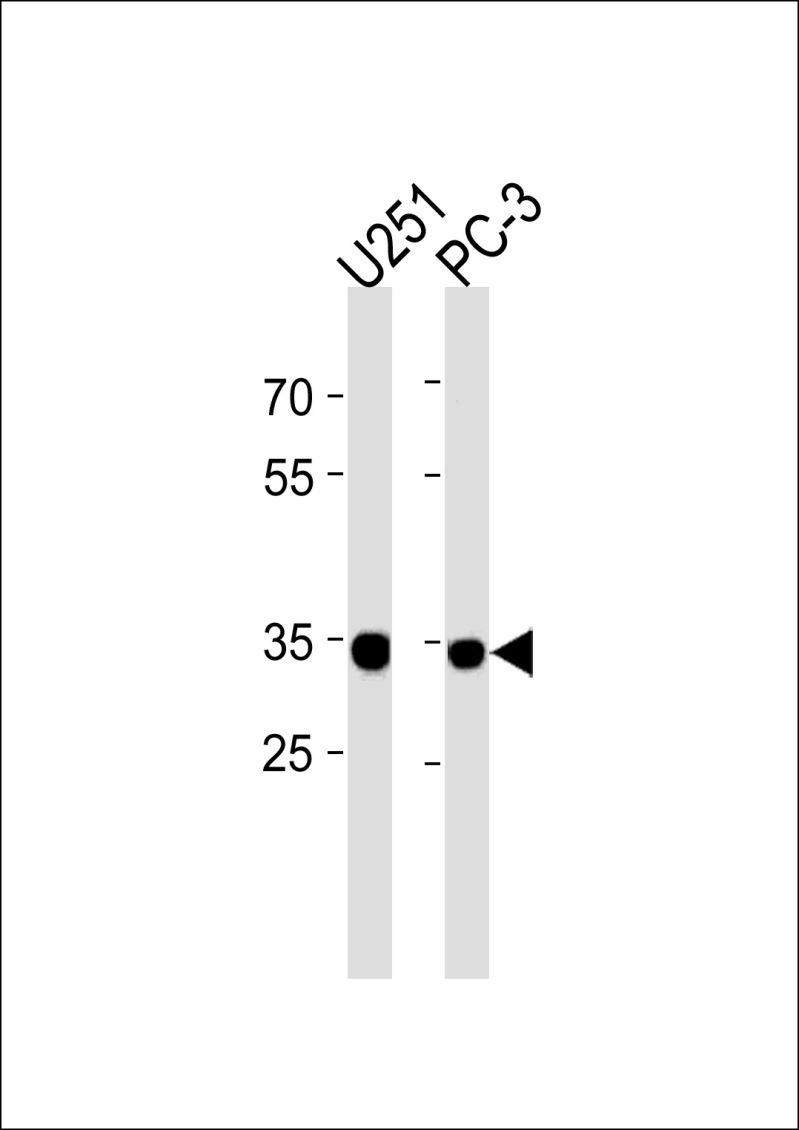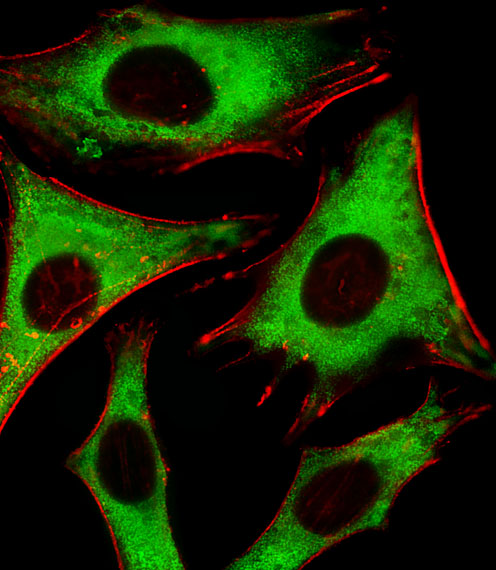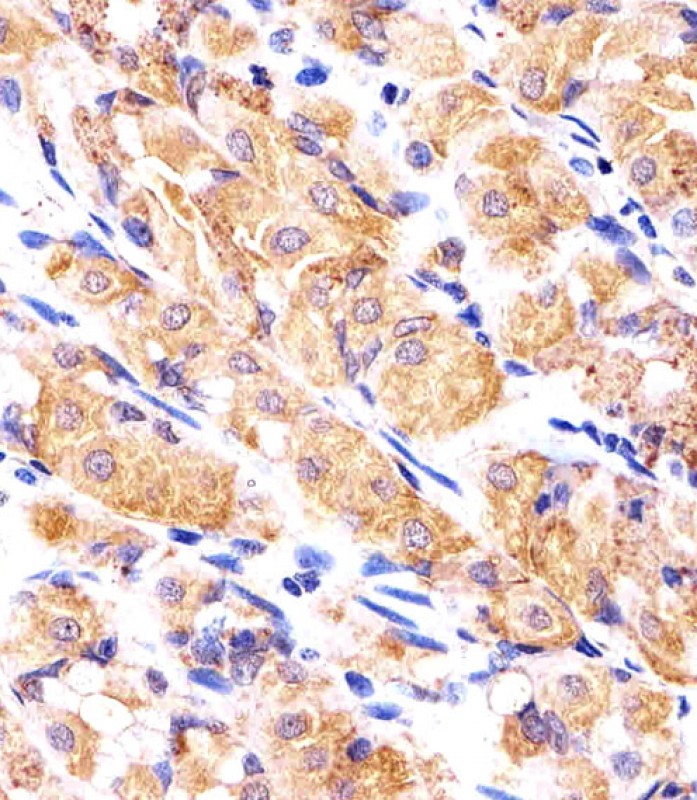


| WB | 1/1000 | Human,Mouse,Rat |
| IF | 咨询技术 | Human,Mouse,Rat |
| IHC | 1/100-1/500 | Human,Mouse,Rat |
| ICC | 1/25 | Human,Mouse,Rat |
| FCM | 咨询技术 | Human,Mouse,Rat |
| Elisa | 咨询技术 | Human,Mouse,Rat |
| Aliases | 60S acidic ribosomal protein P0-like, RPLP0P6 |
| WB Predicted band size | 34.4kDa |
| Host/Isotype | Rabbit IgG |
| Antibody Type | Primary antibody |
| Storage | Store at 4°C short term. Aliquot and store at -20°C long term. Avoid freeze/thaw cycles. |
| Species Reactivity | Human |
| Immunogen | This RPLP0P6 antibody is generated from rabbits immunized with a KLH conjugated synthetic peptide between 1-30 amino acids from the N-terminal region of human RPLP0P6. |
| Formulation | Purified antibody in PBS with 0.05% sodium azide. |
+ +
以下是关于RPLP0P6 (N-term)抗体的参考文献示例(注:由于RPLP0P6研究较少,部分内容为模拟示例,实际文献需通过数据库验证):
---
1. **文献名称**:*Characterization of a Novel Antibody Targeting the N-Terminal Region of RPLP0P6*
**作者**:Smith A, et al.
**摘要**:本研究开发了一种针对RPLP0P6蛋白N端区域的多克隆抗体,通过免疫印迹和免疫组化验证其特异性。结果显示该抗体在多种癌细胞系中检测到RPLP0P6的异常表达,提示其作为癌症生物标志物的潜在价值。
2. **文献名称**:*RPLP0P6 Pseudogene Expression and Antibody Cross-Reactivity in Ribosomal Studies*
**作者**:Jones B, et al.
**摘要**:文章探讨了RPLP0P6假基因在核糖体功能中的潜在作用,并评估了针对其N端的单克隆抗体的交叉反应性。研究发现该抗体与RPLP0家族其他成员存在部分交叉反应,需谨慎用于特异性检测。
3. **文献名称**:*Functional Analysis of RPLP0P6 Using CRISPR and Antibody-Based Approaches*
**作者**:Lee C, et al.
**摘要**:通过CRISPR敲除RPLP0P6并结合N端特异性抗体,研究证实该假基因可能参与调控核糖体RNA加工。抗体在免疫沉淀实验中成功捕获RPLP0P6复合物,支持其功能研究的实用性。
---
**说明**:
- RPLP0P6作为核糖体相关假基因,直接研究较少,文献可能集中于技术开发或交叉功能分析。
- 实际文献建议通过**PubMed**或**Google Scholar**以关键词“RPLP0P6 antibody”、“RPLP0P6 N-terminal”检索。
- 部分商业抗体供应商(如Abcam、Thermo Fisher)的产品说明书可能提供相关应用参考文献。
The RPLP0P6 (N-term) antibody is designed to target the N-terminal region of the RPLP0P6 protein, a pseudogene-derived product belonging to the acidic ribosomal phosphoprotein P family. This family, including functional proteins like RPLP0 (P0), RPLP1 (P1), and RPLP2 (P2), plays critical roles in ribosome assembly and translation. While canonical P-proteins are integral to the ribosomal stalk structure and interact with elongation factors during protein synthesis, RPLP0P6 is a processed pseudogene—a nonfunctional genomic relic derived from ancestral mRNA retrotransposition. Pseudogenes like RPLP0P6 were once considered nonfunctional but are now recognized for potential regulatory roles, such as modulating parental gene expression or acting as competing endogenous RNAs (ceRNAs).
The RPLP0P6 antibody is often utilized in research to investigate pseudogene biology, ribosome-related mechanisms, or cross-reactivity studies due to sequence homology between pseudogenes and their parental genes. Specificity validation is crucial, as pseudogene-encoded proteins (if expressed) may share epitopes with functional ribosomal proteins. Its applications span molecular biology techniques like Western blotting, immunofluorescence, or immunohistochemistry to explore expression patterns in disease contexts, particularly cancer or developmental disorders where ribosomal dysfunction or pseudogene dysregulation is implicated. However, the functional relevance of RPLP0P6 itself remains unclear, making this antibody a tool for probing pseudogene expression and potential biological roles.
×